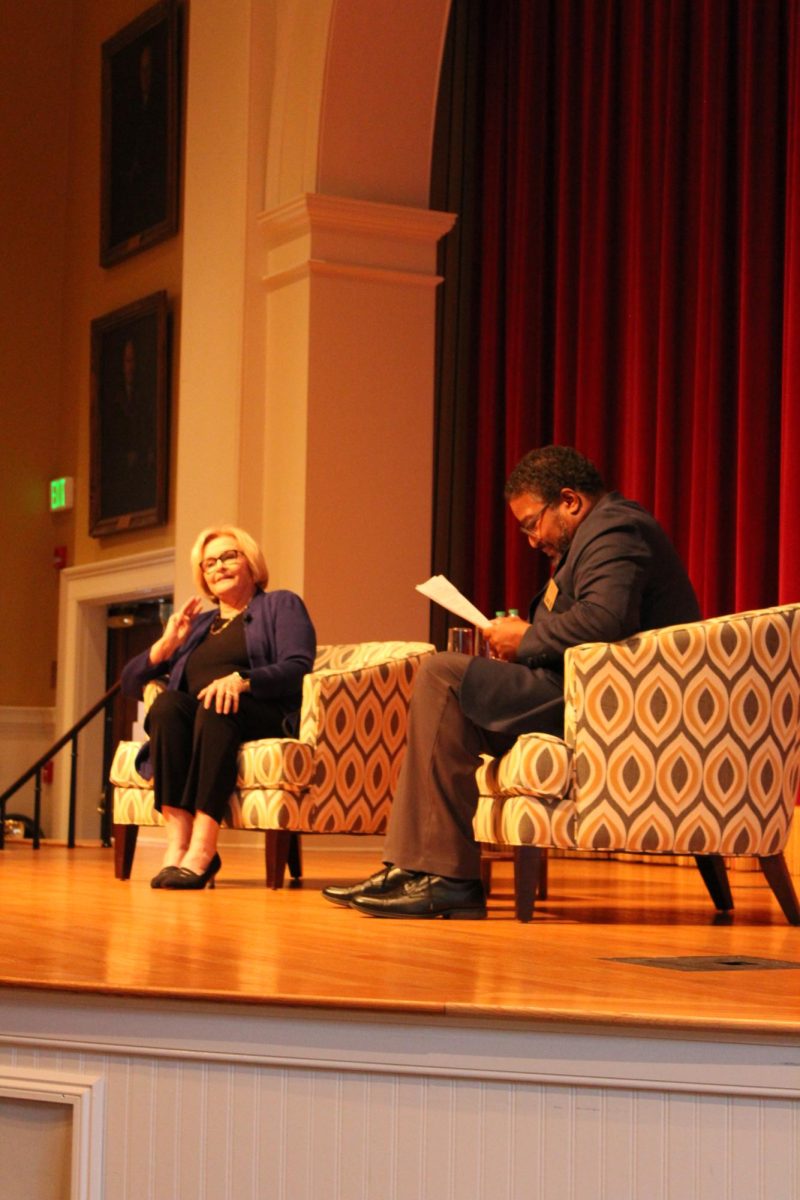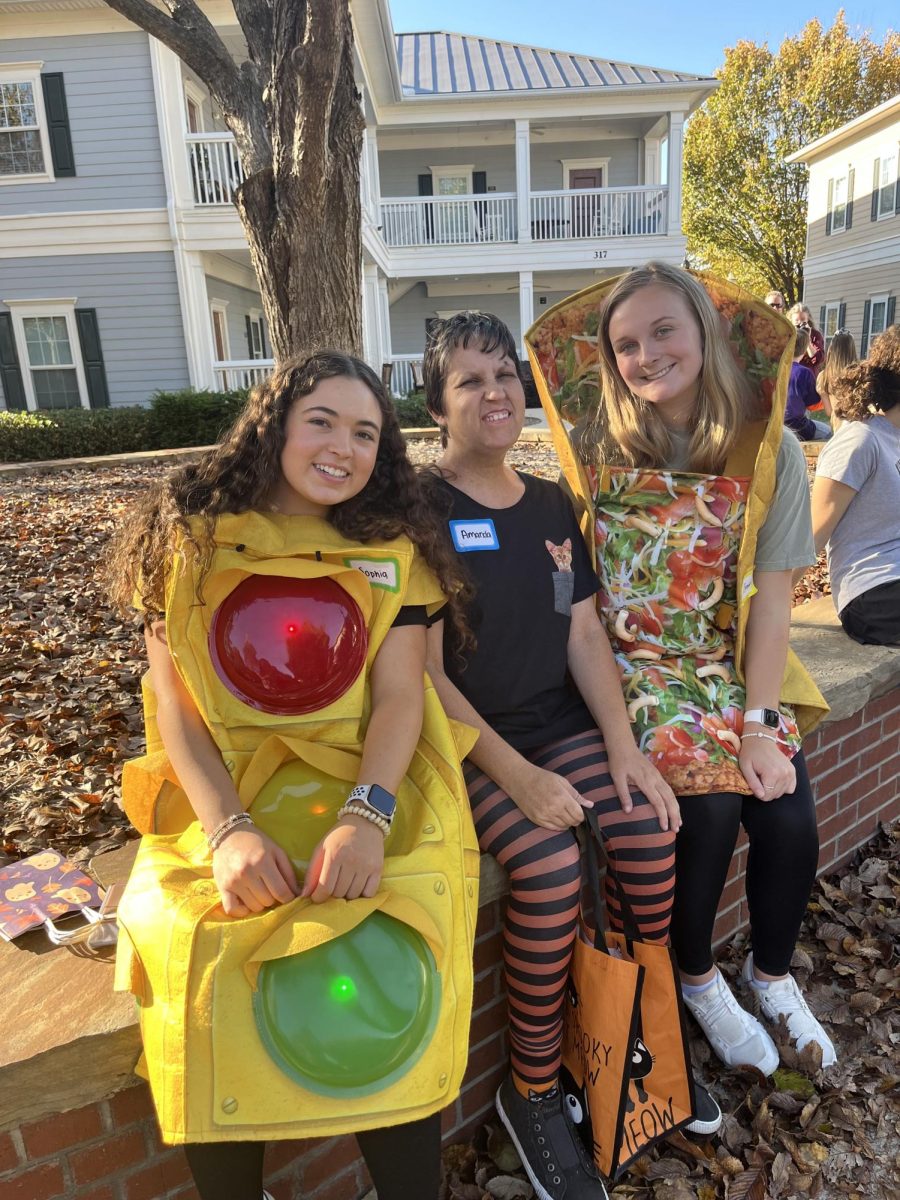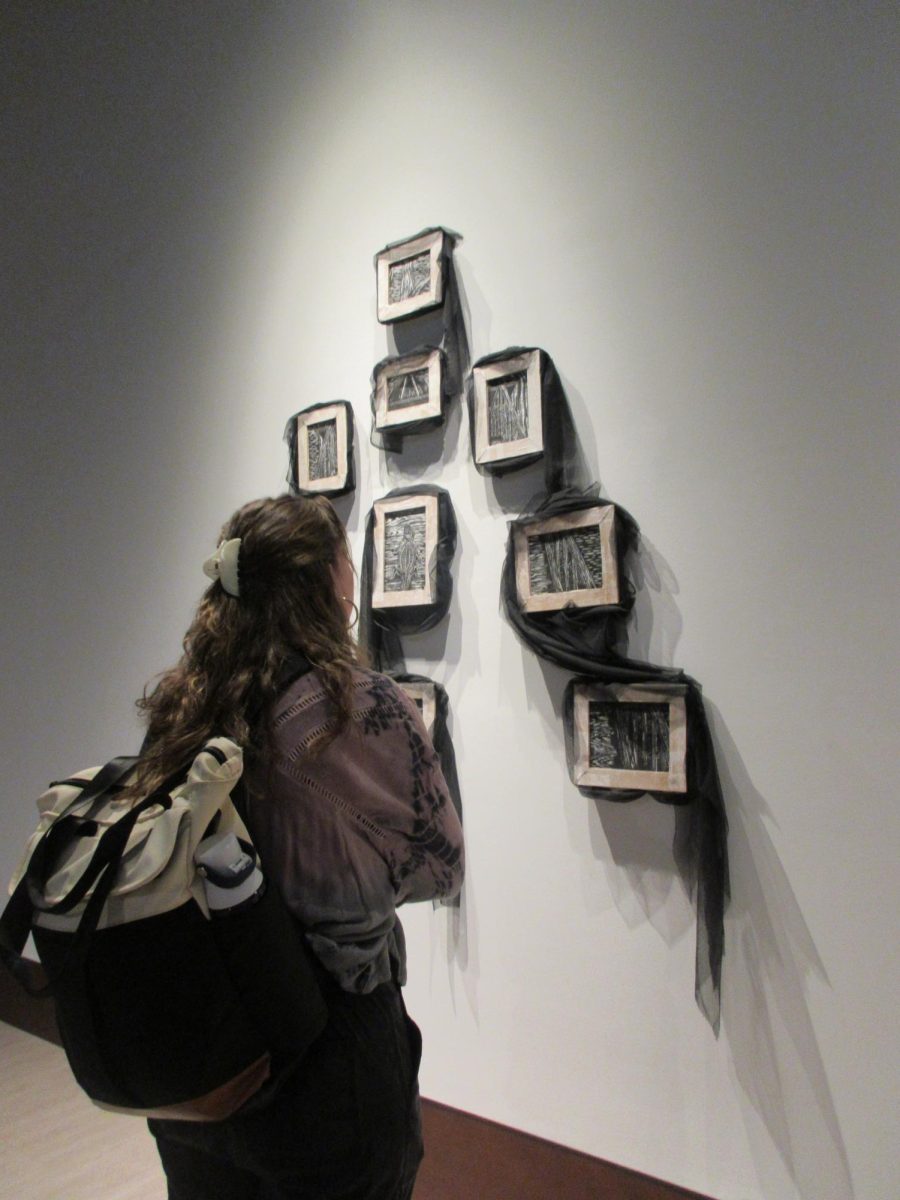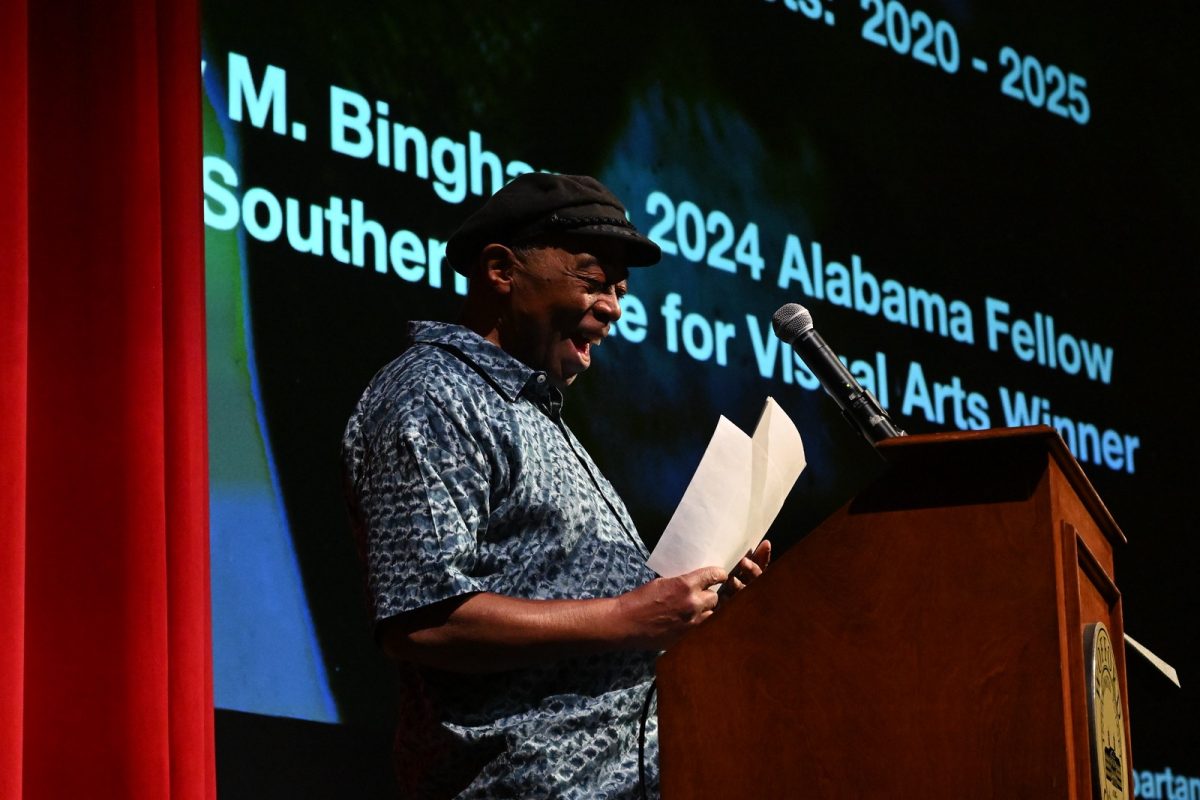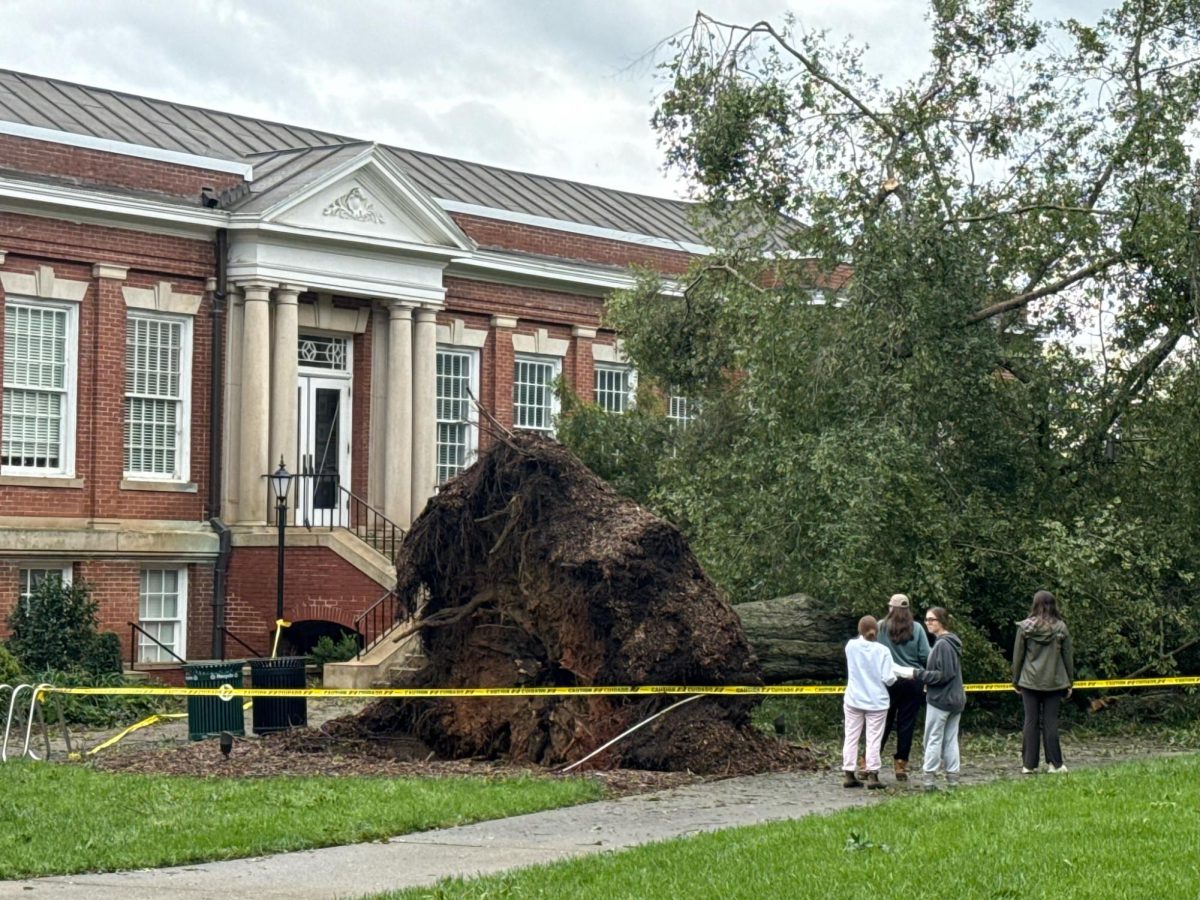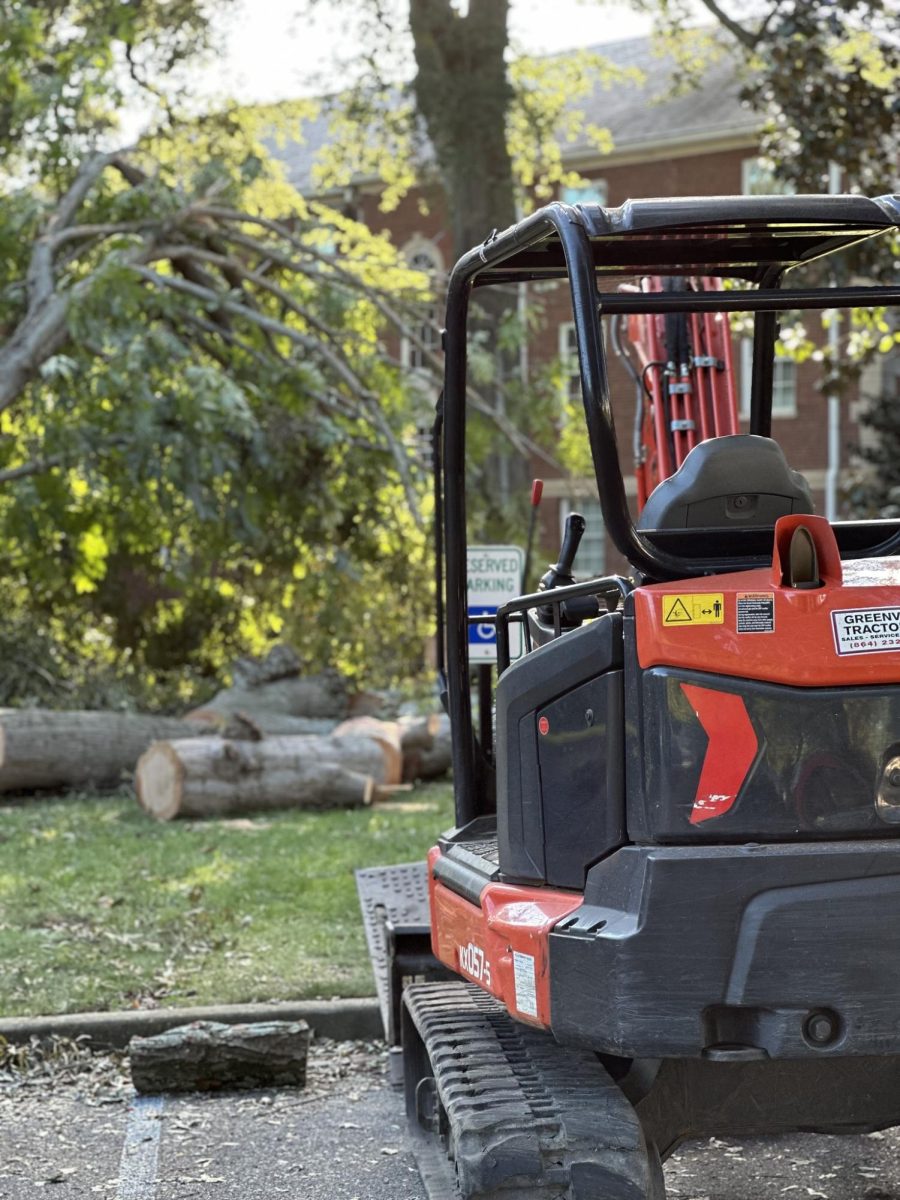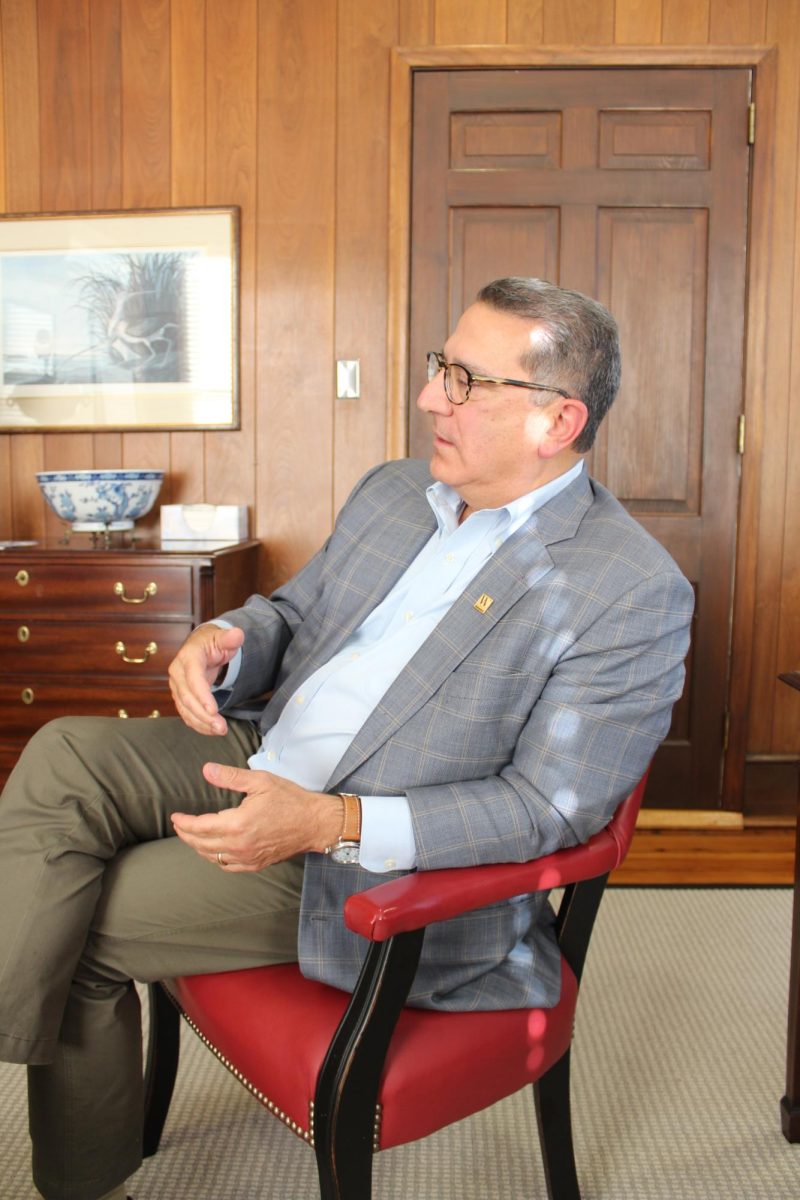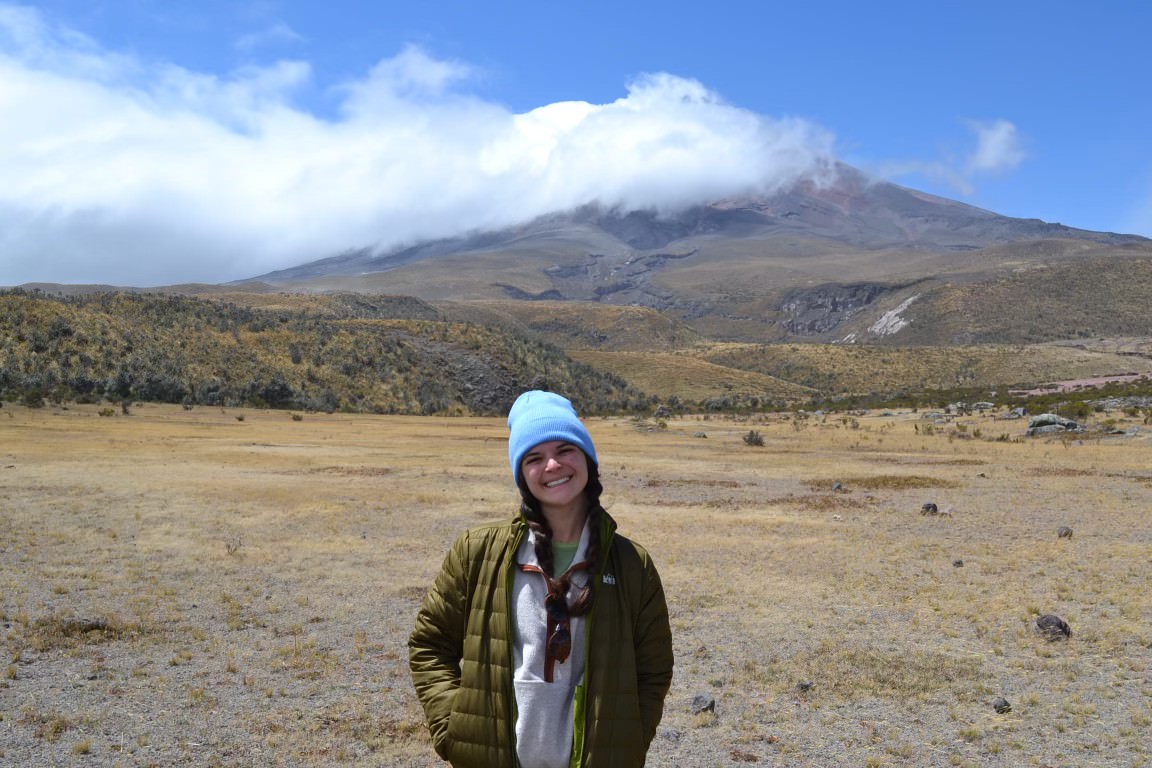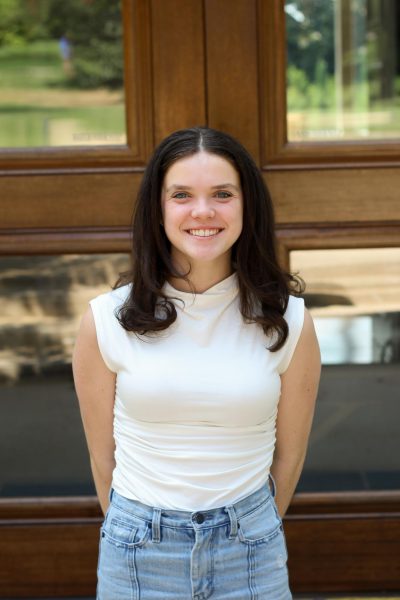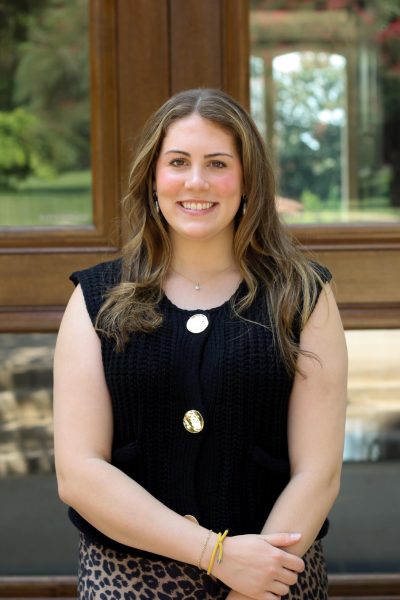Hurricane Helene’s greatest impact on the Spartanburg area occurred early on Friday, Sept. 27 2024. Forty-eight hours before the storm was estimated to hit Wofford College, the communications department notified students and staff of the potential impacts.
The grounds, facilities staff and campus safety were put on notice on Thursday. Residence Life met with the RAs Thursday night so they would be as prepared as possible for the storm and know what to message students.
A lot of the decision-making was driven by power outages. The campus is on various power grids, so when power was lost in one area, it did not mean it was lost in all areas.
When residence halls Lesesne, Wightman, the Michael S. Brown Village Center and the Senior Village lost power, the fire safety system would have only 24 hours before the battery ran out. Duke Energy informed the school that they would likely not be able to restore power in these buildings the following Saturday.
“If there were no fire safety systems, then we couldn’t have anyone sleeping in these halls,” President of Wofford College, Nayef Samhat, said. “We messaged students in these residence halls that they would have to move because there was no power, power wasn’t coming back, and the fire safety systems then would run out of battery.”
Dean Wallace and Director of Residence Life, Kendra Ivins, efficiently developed a plan and coordinating system to accommodate students whose dorms had lost power.
“Once the decision was made that students could not stay in their spaces anymore, all staff who was available on campus came to help provide options and help students navigate those options as best as possible,” Ivins said.
Along with the Benjamin Johnson Arena, students were assisted in moving their mattresses to a location where they felt the most comfortable. This consisted of fraternity houses, locker rooms and various other spaces around campus.
“Kendra and her team, when we needed to come up with a plan to get students moved if we were going to move them, were fast,” President Samhat said. “It was a very well-organized and thought-out plan. Mapped out extremely well.”
Canceling classes was necessary, not only because part of the campus was without power but also because large sections of the community remained out of power. Wofford’s faculty and staff were greatly affected in their own lives and homes.
“It became evident very quickly that the scale of the damage and things we were facing,” President Samhat said. “Not only on campus, in terms of resources, but also the grounds and making sure people weren’t all over the grounds when trees are still a risk.”
Between the trees that came down during the storm and the ones that had to come down for safety, the campus lost an estimated 120 trees. Stewart Winslow, Wofford’s horticulturalist counted the rings the large trees lost, estimating the oldest to have been 127 years old and several others that were around 120 years old.
The grounds and facilities crew were remarkable, some staying overnight on Thursday so they could reduce dangers and hazards as soon as the bulk of the storm had passed around 5 a.m. The facilities crew and the tradesmen took care of various power and electrical issues as they could.
“We’re very fortunate to have the people we have taking care of students in terms of their living circumstances, keeping the grounds clear and safe, and feeding all the people,” President Samhat said.
Cherie Tyger, AVI’s Resident Director of Culinary Services, and her crew did a phenomenal job working around the clock, making adjustments to dining options, and working the logistics on delayed trucks to ensure there would be a sufficient food supply.
When power was lost in Burwell, all of the coolers were moved from Burwell over to Jerry Richardson Indoor Stadium (JRIS) so they could save as much food as possible.
“I think those staff [members] really did a good job of coming together and trying to meet basic needs of students, especially having to adjust from Burwell to JRIS,” Ivins said.
Despite consistent and clear communication from Wofford to parents and students, the parent Facebook group was being flooded with questions and confusion. Wofford messaged through official channels when this was noticed, but many parents were privately messaging the Wofford official page, which was not the most efficient and effective way to contact the school.
Lots of the concerns were claims of students not having any access to food or not having an RA. The Facebook group is not officially associated with Wofford, but Vice President of Marketing and Communications, Jo Ann Brasington, noticed the concern.
“I went in personally, not from Wofford College, and started answering them and asking them to contact me in a different way, [email protected],” Brasington said.
One of the challenges with communication and informing parents was the communication systems were down. The people the school was able to get in touch with were on an unaffected grid, but others were without access to the internet.
“Because I know everyone didn’t have Wi-Fi and everyone had access to different things,we tried to send information in as many ways as possible, so that we could share that communication going through,”Brasington said.
Along with consistent messaging, announcements were also put out on social media as part of the college’s crisis communication plan.
Wofford was extremely prepared in their response. Last year the emergency preparedness team did a simulation where there was a massive storm, as to ensure a concrete response plan. The response was impressive, coordinated and heroic.
“Our staff, the Residence Life staff, our facilities and ground staff, our campus safety, our AVI folks, our communication folks, IT kept functioning as they could. And all the while, their own homes, their own property, their families, friends, all suffering as well in different ways,” President Samhat stated. “They were doing all of this while their own homes and their own lives were touched.”


